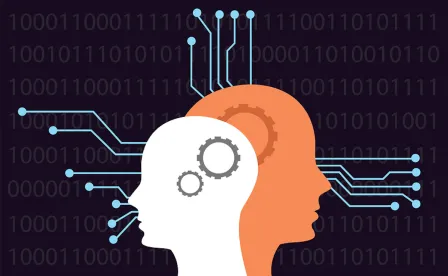As we all know, social media has taken the world by storm. Unsurprisingly, it’s had an impact on trademark and copyright law, as the related right of publicity. A recent case involving an actor’s voice being used on the popular app TikTok is emblematic of the time. The actor, Bev Standing, sued TikTok for using her voice, simulated via artificial intelligence (AI) without her permission, to serve as “the female computer-generated voice of TikTok.” The case, which was settled last year, illustrates how the law is being adapted to protect artists’ rights in the face of exploitation through AI, as well as the limits of current law in protecting AI-created works.
Standing explained that she thinks of her voice “as a business,” and she is looking to protect her “product.” Apps like TikTok are taking these “products” and feeding them into an algorithm without the original speaker’s permission, thus impairing creative professionals’ ability to profit in an age of widespread use of the Internet and social media platforms.
Someone’s voice (and aspects of their persona such as their photo, image, or other likeness) can be protected by what’s called the “right of publicity.” That right prevents others from appropriation of one’s persona – but only when appropriation is for commercial purposes. In the TikTok case, there was commercial use, as TikTok was benefiting from use of Standing’s voice to “narrate” its users’ videos (with some user videos apparently involving “foul and offensive language”). In her Complaint, Standing alleged TikTok had violated her right of publicity in using her voice to create the AI voice used by TikTok, and relied upon two other claims: false designation of origin under the Lanham Act and copyright infringement, as well as related state law claims. The false designation of origin claim turned on whether Standing’s voice was so recognizable that another party’s misappropriation of it could confuse consumers as to whether Standing authorized the Tik Tok use. The copyright infringement claim was possible because Standing created the original voice files for a company that hired her to record Chinese language translations. TikTok subsequently acquired the files but failed to get a license from Standing to use them, as TikTok was legally obligated to do because Standing was the original creator (and therefore copyright owner) of the voice files.
As with other historical technological innovations (one of the earliest being the printing press), the law often plays catch-up, but has proven surprisingly adaptable to new technology. Here, Standing was able to plead three legal theories (six if you count the state statutory and common law unfair competition claims), so it seems artists are well-protected by existing law, at least if they are alleging AI was used to copy their work or persona.
On the other hand, the case for protecting creative expression produced in whole or in part by AI is much more difficult. Some believe AI deserves its own form of copyright, since innovative technology has increasingly made its own music and sounds. Currently, protection for these sounds is limited, since only humans can be identified as authors for the purposes of copyright. Ryan Abott, a professor of law and health science at the University of Surrey in Britain, is attempting to bring a legal case against the U.S. Copyright Office to register a digital artwork made by a computer with AI as its author. The fear, says Abott, is that without rights over these sounds, innovation will be stifled — individuals will not have incentive to create AI works if they cannot protect them from unauthorized exploitation.




 />i
/>i

